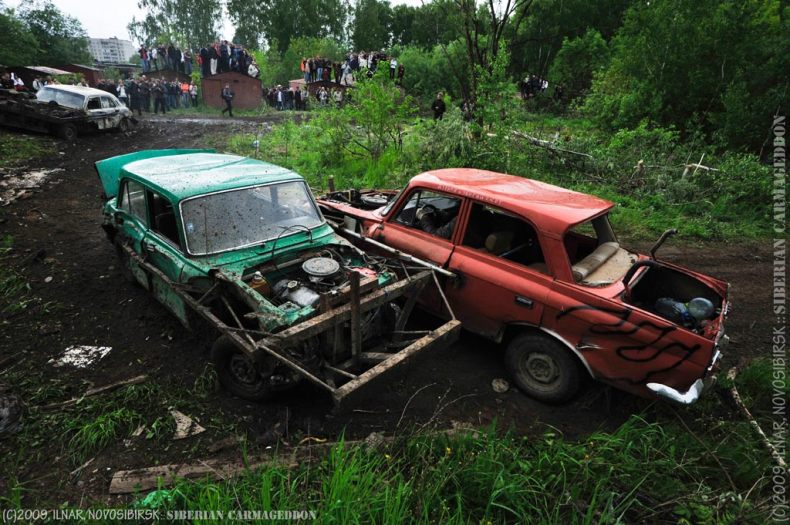|
|
Siberian Carmageddon, Academgorodok, Russia
|
The turn of the 20th century saw the rise of symbolist painting, represented by Mikhail Vrubel, Kuzma Petrov-Vodkin and Nicholas Roerich.
The Russian avant-garde was a large, influential wave of modernist art that flourished in Russia from approximately 1890 to 1930. The term covers many separate, but inextricably related, art movements that occurred at the time; namely neo-primitivism, suprematism, constructivism, rayonism, and Russian Futurism. Notable artists from this era include El Lissitzky, Kazimir Malevich, Wassily Kandinsky, and Marc Chagall. Since 1930s the revolutionary ideas of the avant-garde clashed with the newly emerged conservative direction of socialist realism.
Soviet art produced works that were furiously patriotic and anti-fascist during and after the Great Patriotic War. Multiple war memorials, marked by a great restrained solemnity, were built throughout the country. Soviet artists often combined innovation with socialist realism, notably the sculptors Vera Mukhina, Yevgeny Vuchetich and Ernst Neizvestny.
|
|









